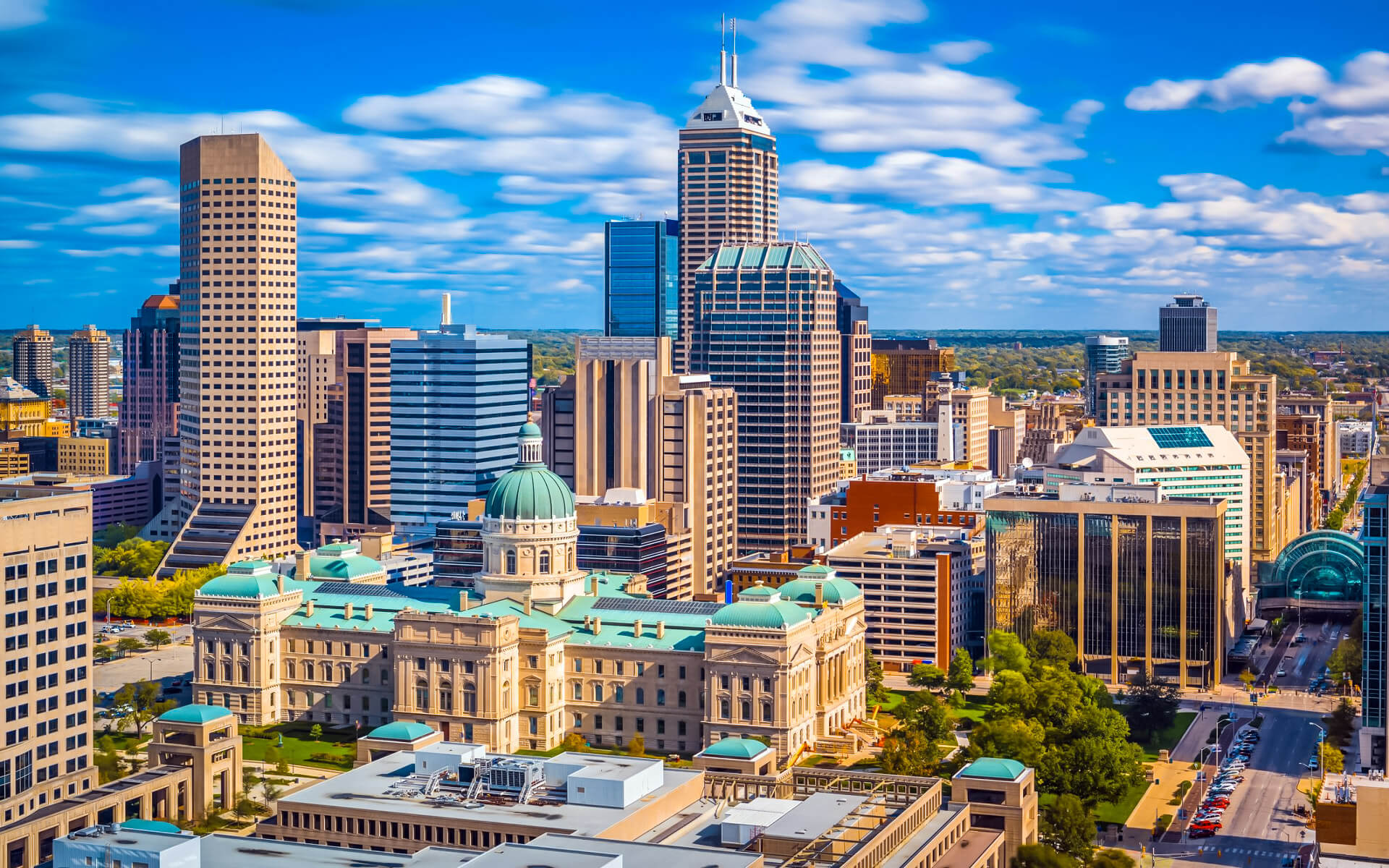Indianapolis is the state capital and biggest city in the United States of America’s state of Indiana, as well as the county seat of Marion County. It is situated in the Midwest’s East North Central area, near the junction of the White and Fall rivers. The city encompasses 372 square miles (963.5 km2) and has an estimated population of 853,173 in 2015, making it the second biggest city in the Midwest, behind Chicago, and the fourteenth largest in the United States. The Indianapolis metropolitan area (MSA) has a population of about 1,988,817 people, making it the 34th most populated MSA in the United States. With a population of 2,372,530, its combined statistical area (CSA) is ranked 26th.
Founded in 1821 as a planned city for the new capital of Indiana’s state government, Indianapolis was laid out on a one-square-mile (2.6 km2) grid by Alexander Ralston and Elias Pym Fordham. Beyond the Mile Square, the city expanded as the train and completion of the National Road cemented the city’s status as an industrial and transportation hub. Indianapolis remains a major distribution and logistics hub, as four Interstate Highways converge in the city, earning the city the moniker “Crossroads of America.” Indianapolis is also a major center for biotechnology and life sciences, with companies such as Eli Lilly and Dow AgroSciences contributing to the city’s $125.8 billion gross domestic product (GDP) in 2014. Indianapolis holds several major events each year, including the Indianapolis 500, the world’s biggest single-day athletic event. As the National Collegiate Athletic Association’s (NCAA) headquarters, the city holds the Men’s and Women’s Final Four basketball championships on a regular basis. In 1987, it hosted the Pan American Games X, and in 2012, it hosted Super Bowl XLVI.
The city’s philanthropic community played a significant role in the development of some of the city’s most well-known cultural institutions, including The Children’s Museum of Indianapolis, the Indianapolis Museum of Art, the Indianapolis Zoo, the Eiteljorg Museum of American Indians and Western Art, the Indiana State Museum, and Indiana Landmarks. Lilly Endowment, headquartered in Indianapolis, is one of the biggest foundations in the United States, with about $10 billion in assets. Outside of Washington, D.C., the city contains the biggest collection of memorials commemorating soldiers and war dead in the United States. Since the 1970 city-county unification known as Unigov, local government administration has been led by an elected 25-member city-county council chaired by the mayor. Indianapolis is classified as a worldwide city of “high sufficiency.”


